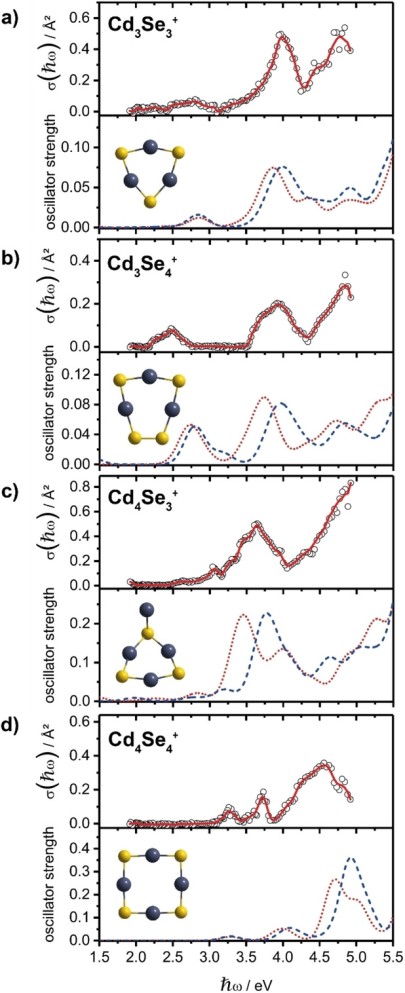In the past decades, the exploration of smaller and smaller semiconductor materials has drawn significant attention in industry and fundamental research. Especially so‐called quantum dots (QDs) consisting of II–VI semiconductor materials as CdSe exhibit intriguing optoelectronic properties, because its photoluminescence can be tuned by varying the particle size. In most experimental studies, colloidal CdSe QDs were examined. It is nowadays not only possible to synthesize and isolate colloidal QD samples with a well defined size, but also feasible to control the surface composition. The optical absorption of these QDs shows for example a red‐shift with increasing Se content. In order to get a fundamental understanding of how the optical behaviour of semiconductor nanoparticles changes with their size and chemical composition in detail, the investigation of isolated semiconductor species is necessary, because by this ligand and solvent effects are ruled out.
Therefore, we have studied the influence of the stoichiometry on the geometric and electronic structure of isolated CdSe clusters, in order to peel out the intrinsic properties of the system. To work out the impact of stoichiometry, isolated clusters with an excess of Se or Cd are compared to the stoichiometric species. Comparing the experimentally measured absorption spectra with quantum‐chemical calculations results in a detailed insight of the chemical bonding in CdSe nanoclusters. Single positively charged species have been investigated because the defect electron in the clusters acts as a sensitive probe for the electronic structure.
We found that Se‐rich nanoclusters contain a Se subunits which are responsible for the enhanced light absorption in the visible spectral range. In contrast, the radical electron of the Cd‐rich species is localized at a Cd centre. The excess Cd atom is partly responsible for an intense optical absorption in the near ultraviolet. The variation of the geometry and the optical behaviour in dependence of the stoichiometry is discussed with respect to the photocatalytic properties of CdSe nanoparticles.
Link to Publication









